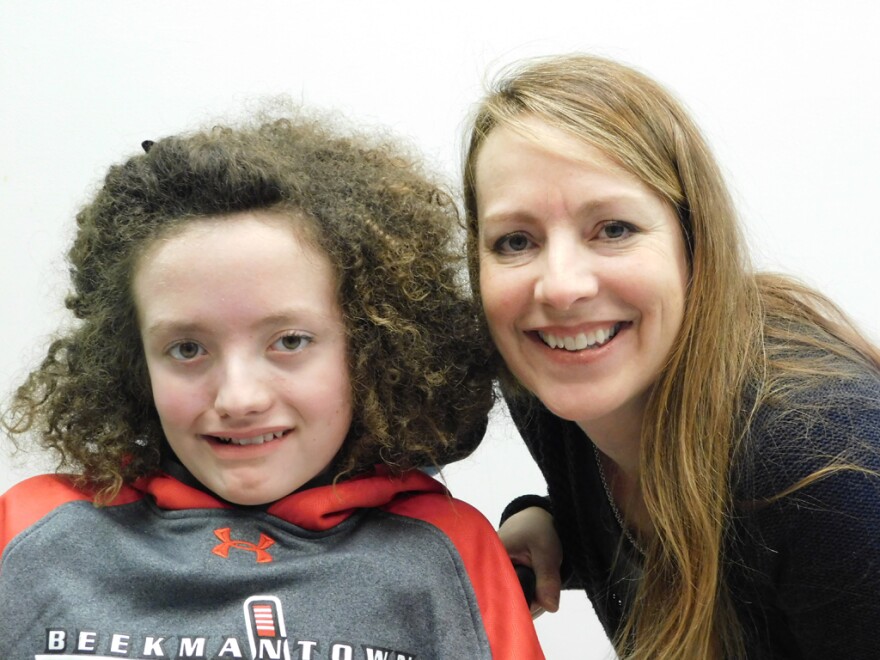Hannah’s Hope is a charity that was formed in 2008 after then-Plattsburgh residents Lori and Matt Sames’ daughter was diagnosed with a rare progressive nerve disease. Known informally as GAN, the disease appears in early childhood and slowly destroys the central nervous system. Hannah, who recently underwent gene therapy, and her mother Lori spoke about the disease and her progress.
GAN or Giant Axonal Neuropathy impacts sensory and motor neurons that govern movement and sensation. Nerve proteins fail to communicate between the peripheral and central nervous system. Patients generally die by their 20's or 30’s.
Diagnosed at age 3, Hannah Sames will be 13 years old in March. She says she is doing pretty well. “My legs feel the same. But my mom says I’m strong.”
Lori Sames: She said her legs feel the same but my mom says they're stronger. She's gained twelve pounds. So and she can still be weight bearing and stand herself up so I call that a win.”
Lori Sames explains that her daughter was the second of five children to undergo experimental gene therapy at the University of North Carolina Gene Therapy Center to combat the condition. “She was injected on July 21 and in theory gene therapy is a one and done. So they deliver a healthy copy of the gene in a viral capsid. The virus attacks the nerve cells and infects it with a healthy copy of the gene. That in theory will have lifelong expression of the missing protein. So with Giant Axonal Neuropathy in this clinical trial Hannah and these children the first ever to receive a therapeutic gene to the spinal cord. So it's experimental. But it's not a continuously administered therapy. In theory it's a one and done.”
Hannah reports that she was asleep during the actual treatment and since then has seen improvements in her mobility. “My fiber motor is a lot better.”
Lori: “She said her fiber motor is a lot better. She's able to grab cards better and flip them on demand. Last week we're at the National Institutes of Health where the clinical trial is taking place. Hannah was having her six month post injection followup assessments. And she would just grab a card, pick it up, flip it over effortlessly and very coordinated. And after the third card I looked at her and I said ‘Hannah look at the control you have over your hand to flip those cards.’ In that moment she realized wow I didn't used to be able to do that.”
Lori Sames explains that gene therapy targets specific cell types and this first effort for GAN targets nerves in the brain and spinal cord. “GAN, Giant Axonal Neuropathy, is a disease of every cell type in the body. So while we hope that this stops the progression of the disease in the central nervous system we also are working on approaches to treat the nerves in the peripheral nervous system. And we're also following very closely gene delivery to the optic nerve program that's underway at U.N.C. that right now is funded by the National Institutes of Health through grants. We're also working on drug discovery. We hope to find small molecule or some compounds that may help also alleviate some of the pathology that we're seeing in the neurons in the peripheral nervous system.”
Giant Axonal Neuropathy is rare and inherited through a single recessive gene. Most patients become quadriplegic as it becomes more severe. A common characteristic of most of those with the disease is very kinky curly hair.
Hannah's Hope:
http://www.hannahshopefund.org/
NIH: U.S. National Library of Medicine:
https://ghr.nlm.nih.gov/condition/giant-axonal-neuropathy
National Organization for Rare Disorders:
https://rarediseases.org/rare-diseases/giant-axonal-neuropathy/



